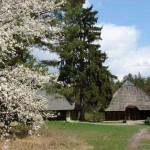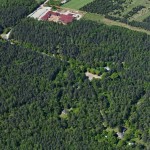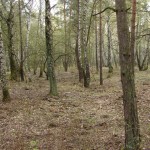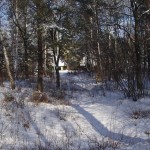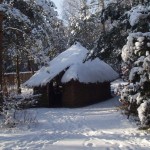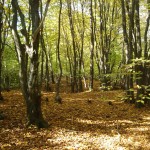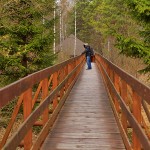The Krzemionki Opatowskie Nature Reserve, decreed into existence by the Ministry of Environment, Protection, Natural Resources and Forestry on 27 June 1995, includes the former archaeological reserve along with surrounding forest and post-industrial areas. The total area is 378.81 ha. The objective is to maintain for scientific and educational purposes the natural stands of many rare and protected plant species connected mainly with the thermophilic and calcicolous turf and bushes communities. The reserve also provides the opportunity for studying natural undisturbed forest flora succession on land formerly under cultivation. The village of Krzemionki existed from 1913 until the mid 1970s in the direct vicinity of the mining field. Part of the mining field and adjacent areas had been used for pasture and agriculture. Remains of farm buildings and overgrown orchards can still be seen in the southern part of the reserve.
There are 39 species of rare and protected plants in the Krzemionki reserve. Of these 11 species are under strict protection, two are partly protected, while the rest are rare. Of greatest interest are daphne/wawrzynek główkowy, multiflower anemone/ zawilec wielkokwiatowy, sacral gentian /goryczka krzyżowa, common ladyslipper / obuwik pospolity, Turk’s cap lily / lilia złotogłów, stemless carline / dziewięćsił bezłodygowy, Pannonian thistle / ostrożeń panoński, common foxglove /naparstnica zwyczajna.
The world of birds is just as rich. Together with sporadically appearing birds, the number of species noted at the Krzemionki reserve comes up to about 70.
Reptiles and amphibians are represented by a number of species, including the very rare and beautiful smooth snake. The large size and partial fencing in of the Krzemionki Opatowskie nature reserve has created a haven for a substantial number of mammals starting from the biggest species, deer, right down to the smallest common shrew and tiny shrew/ ryjówkę malutką.
An in-depth study of the wealth of the nature reserve is currently underway, carried out by researchers from the Jan Kochanowski Humanistic and Natural Sciences University in Kielce. An educational walk presenting the richness of the flora in the reserve is in preparation. It will include some of the protected plant stands, different forest communities and natural changes occurring on once inhabited and post-industrial territories.

